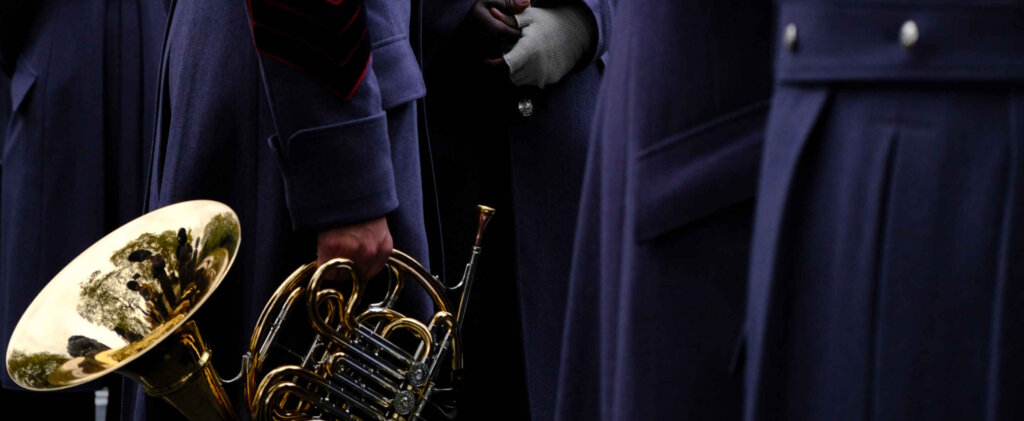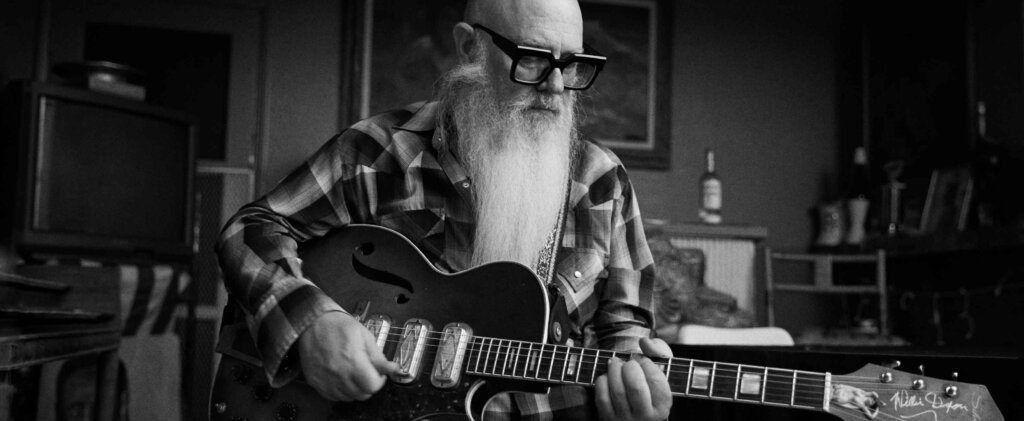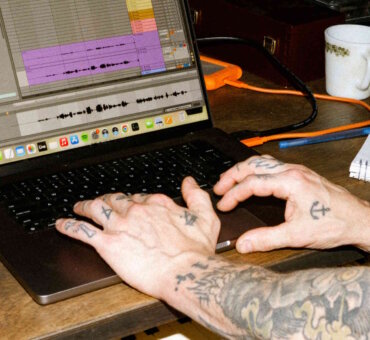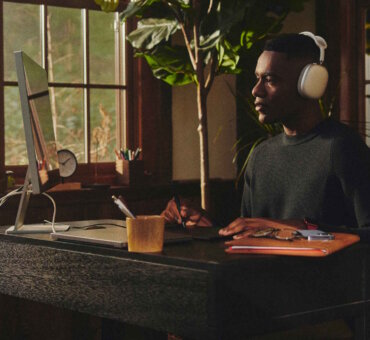TLDR:
- Music plays a pivotal role in filmmaking, shaping both emotional and narrative impact.
- Understanding music licensing is important for any filmmaker wishing to save themselves crucial time and energy.
- Depending on the type of project you’re working on, the distribution channels and the potential for future success, you’re going to need a specific music license.
- One of the key things to consider is the future expansion of your project and how that may change the music license requirements.
Picking the right music for your film is a crucial part of the filmmaking process. However, it’s not just about finding the right track – we also need to consider which music license we’re going to need in order to use that track in our film. Finding the right music license will be determined by the type of project you’re working on – things such as the scale of the film, the distribution channels and the potential for its success. If you don’t obtain the correct music license, you open yourself up to potentially damaging legal consequences.
Understanding how to navigate this music licensing world can save you a lot of hassle and stress, allowing you to dedicate more time and energy to what matters most. Below, we’ll guide you through this process.
The Role of Music in Video Projects
Music is pretty indispensable when it comes to filmmaking. It plays a pivotal role in shaping the emotional and narrative impact of a sequence. For example, imagine the “charge of the Rohirrim” scene from Lord of the Rings: Return of the King (2003) playing out without the music accompanying it. The emotional impact would be nowhere near the same levels.
Imagine Jaws (1975) without the iconic theme tune, or Pulp Fiction (1994) without its many catchy tunes. They wouldn’t be the same films, would they? Here’s how music plays a key role in any film:
Setting the Mood
Whether it’s suspenseful, romantic, joyful or melancholic, Music can establish the overall tone of a scene. For example, in the zombie hit 28 Days Later (2002) and its sequel 28 Weeks Later (2007), the iconic theme tune plays a pivotal role in unsettling the audience, creating tension and dread.
Enhancing Emotional Depth
Music has the power to amplify the emotions portrayed on screen. It can intensify the sadness of a character’s loss, the excitement of an action-packed sequence or the joy of a triumphant moment. By complementing the visuals, music allows viewers to connect more deeply with the characters and their experiences. Take this iconic scene from 500 Days of Summer (2009), for example. We really feel the elation and high our character is experiencing in this moment.
Guiding Narrative Rhythm
Just as music has its own rhythm and tempo, it can also influence the pacing and flow of a film sequence. Slower, more contemplative music could accompany a moment of reflection or introspection, while a wild upbeat track might accompany a fast-paced chase scene. The intro to Baby Driver (2017) is a great example of this.
Highlighting Key Moments
Music can draw attention to significant moments in a film, emphasizing their importance and impact. Whether it’s a climactic battle, a heartfelt confession, or a shocking revelation, the right musical cue can elevate these moments, making them more memorable and impactful for the audience. In Star Wars: The Empire Strikes Back (1980), the subtle orchestral rise lands perfectly with the shocking revelation.
Establishing Atmosphere and Setting
Music can also help establish the time period, cultural context and geographic setting of a film. By incorporating elements of specific musical styles or using traditional instruments associated with a particular culture, filmmakers can immerse viewers more fully in the world of the story. The intro to Killers of the Flower Moon (2023) does this expertly, with the use of native rattles and wind instruments intertwined with country music helping to establish not just the geographical setting and time period, but the clashes of culture playing out in the film.
Choosing the Right Music License
If you’re asking “what music license do I need?” then there are a few key factors to consider.
Type of project
You need to establish whether your project is a film, a documentary, a web series, a commercial advertisement or something else entirely. Different types of films and videos require different types of licensing. For example, if your project is commercial in nature (intended for profit, promotion, advertising), you’ll typically need a music license for commercial use. Non-commercial projects such as personal videos or student films might require a different type of license or might even fall under fair use depending on the circumstances.
Distribution channels
Different distribution platforms have different requirements. If you’re producing content for YouTube, you’ll want to ensure the music is cleared for use on that platform. Similarly, if your project will be broadcast on television or screened in theaters, then you’re going to need appropriate licenses for those mediums.
Potential future success
Depending on the project you’re working on, it can be good practice to anticipate any future success your film may have. One approach is that when obtaining music licenses, you ensure that they’re future-proofed and scalable. This means that the licenses should allow for broader usage as the success of your film grows. If you initially secure rights for online streaming but later secure a deal for theatrical distribution, your music licenses should permit this expansion without additional complications.
Of course, this approach can be really cost prohibitive because making sure you have coverage for all potential future uses can be very expensive. At a minimum, you should make sure you’re covered for the uses you know you’ll absolutely need right now. The beauty of using a service like Musicbed is that if a larger or different use/coverage need arises later, you can simply come back and add extended or new uses.

Planning for future expansion
Alongside scalable music licenses, there’s a few other things to consider when it comes to the future expansion of a video or film project.
- Royalty obligations. Some music licenses involve royalty payments based on the performance or usage of the music. In simpler terms, if your film becomes more popular and garners a wider audience or more views, then you may be required to pay more money to the music artist. While sync licenses grant approval for music in the actual video, the display of the film (or “performance” of it) depends on the outlet, distribution, or network / platform it is being shown on. There are several types of Royalty collections organizations and almost all will have deals in place with platforms that most clients use (Youtube, Vimeo, UGC and social sites, and even TV networks). But occasionally there’s a unique use that might require additional “public performance” clearance. Understanding the terms of your licenses and how they might impact your budget as your film succeeds is essential for financial planning.
- Clearance for different platforms. As your film gains traction, you may explore distribution opportunities across various platforms, including streaming services, television and theatrical release. Ensure that your music licenses cover all the intended distribution channels and be prepared to secure additional licenses or clearances if new platforms and distributions arise
- Potential for merchandising and spin-offs. Successful films often lead to merchandising opportunities and spin-off projects. If you anticipate this, consider whether your music licenses allow for the use of the music in related products or derivative works. Negotiating comprehensive rights from the outset could save you headaches down the line, but it’s going to be expensive.
If you secure a license for just what you need in that moment, you can always go back and secure more coverage at a later date. Having a quote for comprehensive rights is useful so that you at least have a ballpark figure in your mind.
- Avoiding legal issues. Failure to secure appropriate music licenses can lead to legal issues, especially if your film achieves significant success. Lawsuits or claims of copyright infringement can tarnish your film’s reputation and result in costly (and stressful) legal battles. By ensuring that your music is properly licensed, you mitigate the risk of legal complications, which is particularly crucial as your film gains prominence.
Here at Musicbed, we’re the experts when it comes to music licensing for video. Whatever you’re working on, we can help you find the right license for you and your project. Below, let’s take a look at more detailed information about music licensing for film.
Understanding Music Licensing
When a musician creates an original work and registers the copyright for that work, that song becomes their intellectual property. By law, that property cannot be used by anyone other than the copyright owner without written consent from the owner.
As a way to earn income from their work, artists and copyright owners can issue licenses that allow others to legally use their work in their projects. These licenses will include the usage and term rights, which determines how the song will be used. There are six major forms of music licenses:
- Synchronization License (Sync License)
- Mechanical License
- Master License
- Public Performance License
- Print Rights License
- Theatrical License

Musicbed’s Licensing Options
Musicbed grants a Synchronization/Master Use License. A Synchronization/Master Use License allows music to be used in timed relation to moving pictures, which can be defined as a slideshow, video or a film. All of the music that we license is pre-cleared in terms of Master and Publishing.
Musicbed provides three main types of subscription: individual, business and enterprise.
Individual subscription
The individual subscription is ideal for content creators. It covers any video being uploaded to the internet (YouTube, being the obvious candidate here), social media accounts up to 1m followers and podcasts. You’ll also have the freedom to monetize all of your content. While individual subscriptions don’t come with coverage for client work, it can be added if freelancers or content creators do work for clients.
Business subscription
The business subscription is great for businesses, brands, and nonprofit organizations. In this subscription you get everything that the individual tier includes, as well as being covered for client and brand work, which includes clients who have up to 250 employees.
Enterprise subscription
The enterprise subscription is best suited for large-scale brands and corporations. The comprehensive coverage provided in this subscription includes social media accounts with more than 1m followers, allows for clients of any size, celebrities with 1m or more followers and a range of distribution channels including broadcast, cinema and film festivals, VOD and video games. Unlike individual and business subscriptions, with an enterprise subscription we have what we call “extended uses”, which means we’ll work with you to customize the subscription based on your specific needs.
Single song licensing
We recognise that not everyone wants or needs a subscription. In some cases, you need one or two songs for a very specific project. That’s why we also offer single song licensing. A single use license means the song can only be used once – one song synced to one edit of one video, one time. This can be a much more cost effective way to do things for a one-off project. For example, if you’re on an individual subscription that doesn’t cover a larger client, it can prove much cheaper to opt for single song licensing, rather than upgrading your whole subscription.

Selecting Music for Your Project
So, now that you understand music licensing for video, how do you go about selecting the right music for your project? You want to find a piece of music that’s unique, but also works for the film sequence you’re editing.
With Musicbed, there’s a host of tools that can really help you hone in on the right music track. For example, your starting point might be genre. If your film is set in the future and has a dystopian feel, you may want to narrow your search to the electronic genre. If it’s a travel film focusing on Iceland, you might look at cinematic and ambient tracks.
You can narrow the focus further by using mood. Are you looking for a track that’s carefree and chill? Or something that’s both serious and somber? Additional tools such as attributes and instruments can help you pick out specifics such as an acoustic guitar, or an earthy feel.
Diving into the advanced tools, you can even play around with various BPM settings, select specific major and minor keys, the pace and rhythm of the music track as well as its length, and whether it includes vocals and lyrics.
Let’s say that you’ve gone through this process and you still can’t quite find what you’re looking for. Have you tried our AI Search by Song? Musicbed users now can search for similar music specifically by a segment of any song. Simply set in and out points on any song to dynamically shift how Musicbed AI searches for hundreds of similar songs on Musicbed that match the highlighted segment. Additionally, you can click ‘Show Similar’ in the song player or scroll down on any song page to discover hundreds of similar song results. This can be a great way to find a similar song if the one you’re wanting to use for your project is proving too expensive to clear.
Risks of Using Copyrighted Music Without a License
If you don’t obtain the proper music licenses and permissions then you open yourself up to legal threats. You’ll be at risk of being sued for copyright infringement, which can result in very costly, lengthy and stressful court cases. You face financial damages and maybe even criminal penalties, as well as the potential of losing your reputation and relationships with people throughout the industry.
Using Musicbed strips all of this hassle away. With a subscription, you’ll receive full access to our catalog and it’s all cleared, ready for you to use. All you have to do is identify which track it is you’d like to use and download it!
Wrapping up
We all know that choosing the right music for your film is crucial to the success of the project. It dictates both the emotional and narrative impact of a sequence. But even more important is that you’re legally compliant when you select the music you want to use. Having read this guide, you hopefully understand that depending on the type of project you’re working on, the distribution channels and potential for success, you’ll need a different type of music license.
It’s important that when you select your music license, you have sufficient coverage. Don’t just pick the license that works for right now, but also consider the future of your project and how it may potentially grow into something bigger.
*Cover photo licensed via Stills.com





















































































